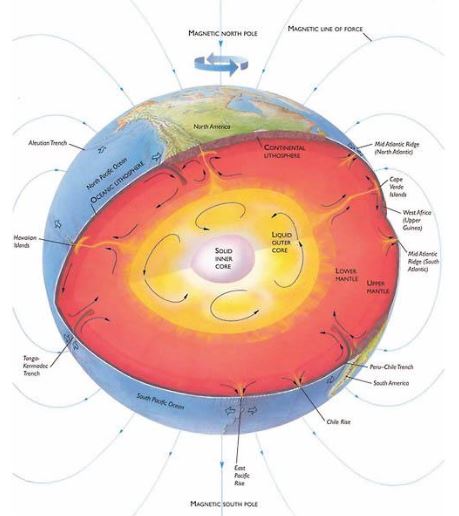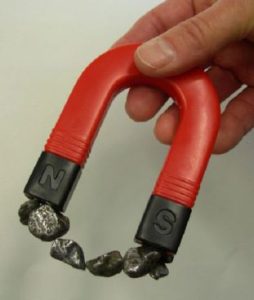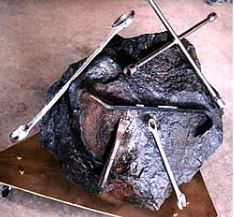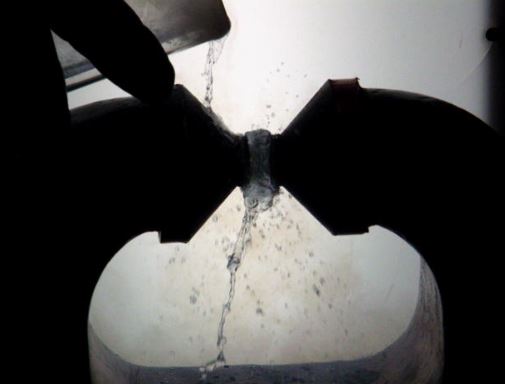Part 1.1 – AC Voltage and Current
Magnetism
In the realm of magnetism, magnetic fields delineate the regions surrounding magnets or in proximity to moving charges. Simultaneously, magnetic flux serves as a crucial measure, quantifying the extent of the magnetic field that traverses a designated area. Together, these concepts form fundamental elements integral to the comprehension and exploration of magnetic phenomena and electromagnetic theory.
Magnetic Field
Magnetic flux, denoted as Φm, represents a quantification of magnetic flux density penetrating a specified surface, which could be, for instance, a conducting coil. It signifies the cumulative magnetic field encompassed within a particular area, and the standard unit for measuring magnetic flux in the International System of Units (SI) is the wWeber (Wb).
Lines of force or magnetic flux have the following characteristics:
- They always form complete closed loops: Lines of magnetic flux also exist all the way through the magnet.
- They behave as if they are elastic: When distorted they try to return to their natural shape and spacing.
- In the space surrounding a magnet, the lines of force radiate from the north (N) pole to the south (S) pole.
- They never intersect (cross).
- Like poles repel and unlike poles attract each other.
Activity: Magnetic Fields
Click the arrows to view images of magnetic fields.
An electric current generates a magnetic field, and the field’s intensity is directly linked to the magnitude of the current. This magnetic field can be easily controlled, allowing it to be activated or deactivated, reversed, and adjusted in strength. Notably, a magnetic field is considered a vector quantity, possessing both magnitude and direction.
Activity: Field Patterns
Click the image hotspots to learn about field patterns produced by a current flowing through a straight conductor.
Click the arrows to learn more about field patterns produced by a current flowing through a straight conductor.
Earth’s Magnetic Field
The Earth acts as a giant electromagnet. There is a swirling liquid iron-nickel outer core floating around a solid iron-nickel inner core. Electrons moving around in the liquid create an electric current.

Earth’s magnetic field serves as a crucial shield, safeguarding us from harmful solar particles by either deflecting or absorbing them. This protective effect is particularly evident at the North Pole, where the energized solar particles penetrate the atmosphere and give rise to the mesmerizing phenomenon known as the aurora borealis.
Activity: Earth Magnetic Field
Click the arrows to see images of Earth’s magnetic field.
Ferromagnetic Material
A ferromagnetic material is a material such as iron that can be magnetized because it contains magnetic properties.


Paramagnetic Material
A paramagnetic substance, such as liquid oxygen, exhibits a temporary response to magnetic fields but does not retain its magnetic properties once the external magnetic field is removed, allowing it to stay suspended between two magnets.

Magnetic Flux
Magnetic flux tends to follow the path of least resistance, which, in terms of flux, corresponds to the path with the lowest reluctance. In practical terms, materials like a soft iron bar offer significantly lower reluctance compared to the surrounding air, causing the flux to deviate from its usual path and preferentially flow through this lower reluctance route.

Activity: Magnetic Flux
Click the arrows to learn more about magnetic flux.
Comparison of Quantities

| Unit Symbol | Unit |
| V | Volts |
| A | Ampere |
| Ω | ohm |
| Ωm | Ohm-meter |
| V/m | Volts per meter |
| A/m2 | Amps per meter2 |
| At | Ampere-turn |
| Wb | weber |
| At/Wb | Amp-turn per weber |
| Hm | Henry-meter |
| At/m | Amp-turn per meter |
| T | Tesla |
| V | Volts |
| C | Coulomb |
| Ω | ohm |
| F/m | Farads per meter |
| V/m | Volts per meter |
| C/m2 | Coulomb per meter2 |
| SYMBOL | MEANING | SI UNIT |
| E | Electric field also called the electric field intensity |
volt per meter or, equivalently, newton per coulomb |
| B | Magnetic field also called the magnetic induction also called the magnetic field density also called the magnetic flux density |
tesla, or equivalently, weber per square meter, volt-second per square meter |
| D | Electric displacement field also called the electric induction also called the electric flux density |
coulombs per square meter or equivalently, newton per volt-meter |
| H | Magnetizing field also called auxiliary magnetic field also called magnetic field intensity also called magnetic field |
ampere per meter |
Alternating Current Theory
Alternating Current (AC) is generated by rotary electro-mechanical generators, which produce a voltage that alternates in polarity. This alternation involves a reversal of positive and negative over time, manifesting as either a voltage that switches polarity or a current that changes direction periodically, oscillating back and forth.
Activity: Alternating Current Theory
Click the image hotspots to learn more about alternating current theory.

